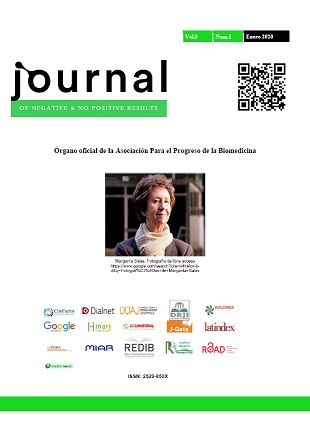Navigation and history of science: The Laconia incident and the total war at sea (The Laws of War)
DOI:
https://doi.org/10.19230/jonnpr.3307Keywords:
World War II, Laconia, submarines, Law of War, shipwreck, rescue, Karl Dönitz, Werner Hartenstein, Chester W. NimitzAbstract
On September 12, 1942, the British ship Laconia was sunk off the coast of West Africa by the submarine U Boat 156 commanded by Korvettenkapitän Werner Hartenstein. The Laconia carried 1,800 Italian war prisoners, 80 civilians and 428 British and Polish soldiers. After the disaster, seeing the situation, Hartenstein began his work fulfilling the duty of relief and displaying a Red Cross flag. Despite this, an American B-24 bomber attacked thus expanding the disaster. British propaganda displayed the idea that German submarines mercilessly attacked convoys. The “Laconia Order” was not completely fulfilled because the Germans continued their help despite the "letter" of that order. The U-Boat Commander, Karl Dönitz, was prosecuted in Nuremberg, and the testimony of Admiral Nimitz clarified many things. Those who died remain in the Atlantic Ocean. Rest in peace.
Downloads
References
Fauchille P. (1925), Traité de Droit International Public. Paris: Rousseau & Cie; 1925.
Fernández Flores JL. Del Derecho de la Guerra. Madrid: Ediciones Ejército; 1982.
Azcárraga y Bustamante JL: Derecho del mar, Tomos I y II. Alcalá de Henares: Universidad de Alcalá de Henares:1983.
Guerra Marítima-Derecho Internacional. Enciclopedia Jurídica, edición 2014. Disponible en: http://www.enciclopedia-juridica.biz14.com/d/guerra-maritima/guerra-maritima.htm
Vansittart R, Dawes CG (Secretario de Estado y General firmantes). Treaty for the Limitation and Reduction of naval Armaments (Part IV, Art.22, relating to submarine warfare). London, 22 April 1930.
Procès-verbal relating to the Rules of Submarine Warfare set forth in Part IV of the Treaty of London of 22 April 1930. London 6 November 1936. London: His Majesty Stationery Office; 1936.
Dönitz K. Diez años y veinte días. Madrid: La Esfera; 2014.
Bekker C. Lucha y muerte de la marina de guerra alemana. Barcelona: Editorial Luis Caralt; 1959.
El incidente del Laconia, 1942. La Gazeta Federal. Disponible en: http://www.lagazeta.com.ar/laconia.htm
Barcala JG. El enrevesado y trágico incidente del Laconia. Disponible en: https://www.cienciahistorica.com/2016/12/20/enrevesado-tragico-incidente-del-laconia/
García C. De hundimientos y náufragos. Cabildo, agosto, 2012.
García-Corrochano L. Aspectos del Derecho Internacional de la guerra naval. Agenda Internacional 1998;4:99-111.
Machado M. la orden Laconia (incidente del Laconia). Disponible en: http://1y2gm.foroactivo.com/t3042-la- orden-laconia-incidente-del-laconia
Röll HJ. Korvettenkapitän Werner Hartenstein: Mit U 156 auf Feindfahrt und der Fall "Laconia". Osnabrück: Flechsig Verlag; 2009.
Blair C. Hitler’s U-Boat War: The Hunted 1942-45. London: Cassell & Co; 2000.
Dönitz K. Mi azarosa vida. Madrid: Libropolis; 2007.
Naciones Unidas. Comisión Preparatoria de la Corte Penal Internacional. PCNICC/2002/WGCA/L.1. Nueva York; 2002.
Sierra J. Oficiales alemanes, en el entierro de Doenitz, sucesor de Hitler. El País, 07 de enero de 1981.
Coates N. Historia de la guerra submarina hasta 1945. Boletín de Información Número 36-IX. Madrid: Centro Superior de Estudios de la Defensa (CESEDEN); 1969.
Nimitz & Doenitz. Robert H. Jackson Center. Disponible en:https://www.roberthjackson.org/nuremberg- event/nimitz-doenitz/
Published
Issue
Section
License
All accepted originals remain the property of JONNPR. In the event of publication, the authors exclusively transfer their rights of reproduction, distribution, translation and public communication (by any sound, audiovisual or electronic medium or format) of their work. To do so, the authors shall sign a letter transferring these rights when sending the paper via the online manuscript management system.
The articles published in the journal are freely used under the terms of the Creative Commons BY NC SA license, therefore.
You are free to:
Share — copy and redistribute the material in any medium or format
Adapt — remix, transform, and build upon the material
The licensor cannot revoke these freedoms as long as you follow the license terms.
Under the following terms:
Attribution — You must give appropriate credit, provide a link to the license, and indicate if changes were made. You may do so in any reasonable manner, but not in any way that suggests the licensor endorses you or your use.
NonCommercial — You may not use the material for commercial purposes.
ShareAlike — If you remix, transform, or build upon the material, you must distribute your contributions under the same license as the original.
No additional restrictions — You may not apply legal terms or technological measures that legally restrict others from doing anything the license permits.

This work is licensed under a Creative Commons Attribution-NonCommercial-ShareAlike 4.0 International License

























